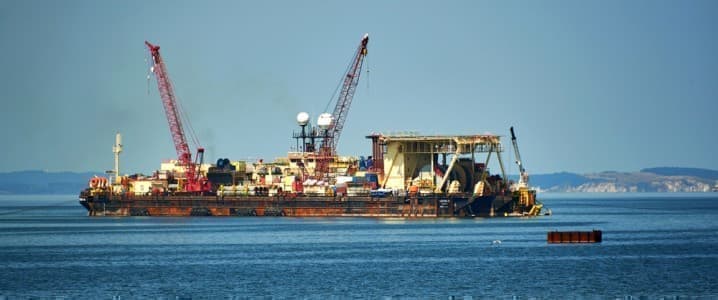Natural gas producers in the North Sea are in a rush to increase production as a supply squeeze lifted gas prices in the UK and Europe to record highs. But it won’t be easy because of the gas production slump in the region earlier this year.
The production slump was the result of delayed maintenance at the Forties pipeline network, which temporarily shut in all 67 offshore fields connected to it for three weeks in June. Some fields remained shut in for longer, Wood Mackenzie said in a report on North Sea gas, as some parts of the pipeline system needed additional work.
As a result, UK gas production in the first eight months of the year totaled just 17 billion cubic meters. This was down from 24 billion cubic meters the previous year. It is, however, recovering: in August, North Sea field operators pumped 72 percent more gas than they did in July, Wood Mac analysts said. This will boost this year’s total production, they added, but it will still likely remain below the 2020 total, at about 27 billion cubic meters.
The European—and UK—gas crunch is becoming an increasingly serious problem. Demand for gas has been on a strong rebound globally, with Asia drawing many cargos that could have otherwise gone to Europe to fill its gas reserves after a prolonged 2020 winter. However, Asian buyers are paying top dollar, and exporters are sending more cargos there.
Meanwhile, Gazprom says it is gearing up to soon launch its Nord Stream 2 pipeline. But it has warned against having too high expectations of additional deliveries. In August, the Russian state company said the new pipeline could ship some 5.6 billion cubic meters by the end of the year, but that would be it for 2021.
The situation has been compounded by lower exports from Norway, where fields have also been shut in for maintenance. This automatically means that gas prices will continue to rise in the observable future—at least until Norwegian field maintenance ends.
Adding insult to injury, wind power generation has been lower than expected recently, deepening the imbalance between demand and supply. The Financial Times reported this week that German wholesale electricity prices for delivery next year had hit more than $106 (90 euro) per megawatt-hour. This was a twofold increase since the start of the year, the report noted.
Related: Soaring Gasoline Prices Could Cripple Biden’s Energy Agenda
Meanwhile, storage facilities remain empty as competition with Asia for liquefied natural gas cargos remains intense. The FT report cited the head of power and gas markets at Norwegian Rystad Energy as saying supply this winter in Europe would be tight, with current reserves far below the five-year average for this time of year.
And then there is the wind issue.
“It is normal to see some seasonality in the wind generation but this summer the generation is even lower than previous years — it’s all related to the summer we have been having across Europe where it has been warm and dry and less windy,” Carlos Torres-Diaz told the FT, adding, “Electricity demand has not been that high in the past couple of months, so it is not really demand that is driving the prices high, it is the fuel mix.”
Weather forecasts pointed to stronger wind power output in the middle of the week, however, which should provide temporary relief for pressured energy systems. However, the longer forecast for the UK points to warm weather for another week. This would be positive for gas demand for heating, but might be negative for wind power output in an illustration of the complex balance in modern hybrid electricity supply systems.
With a seasonal peak in winter demand for gas in the northern hemisphere, Europe and the UK are unlikely to soon solve their gas shortage problem. North Sea field operators may find themselves in for a windfall if they keep boosting production, but even so, they are unlikely to single-handedly supply the UK and Europe with enough gas to have a comfortable winter.
By Irina Slav for Oilprice.com
More Top Reads From Oilprice.com:
- 3 Bullish Catalysts For Oil This Fall
- The U.S. Power Grid Is At Risk Of Catastrophic Failure
- U.S. Oil Rigs See Sharpest One-Week Decline In Over A Year


















